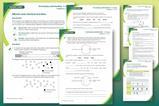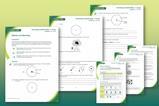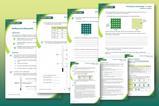As this year’s exams approach, Neil Goalby provides some strategies to help students prepare
It is the time of year when many students start revising for exams, but some are more reluctant than others. Many will be ineffective in their revision and spend hours staring passively at a revision guide or copying notes with an assortment of coloured pens. We need to encourage students to interact with the study material. Here are some activities to try, which will hopefully engage even the most reluctant student.
1. Condense
Rather than copying notes verbatim from a source, challenge students to condense the information by 50%. Get them to really think about what is important, and leave out obvious facts they already know. Students can revisit the notes a second time and try to condense them again by another 50%.
2. Transform text into diagrams
Where possible, ask students to replace text with simple diagrams and concept maps that link ideas together. A method for a required practical could easily be drawn as an annotated diagram or cartoon strip. For example, challenge students to create revision cards for a topic on bonding that contain only labelled diagrams, or create a one-page concept map that shows all the required facts about electrolysis.
3. Play a game
Students can make a simple snap or matching game with scientific terms on one set of cards and definitions on another set. Encourage them to play the game with family at home. This could be a good way to instil the differences between reproducible, repeatable and resolution. Standard exam questions and answers from a topic could also be used for this game.
4. Get quizzing
There are many publishers and companies that offer online quizzes for students. If your school has bought into one, then use it. Equally, it is easy to make your own using Google quizzes. Students can even contribute questions; although writing good multiple-choice questions is not an easy task. An alternative to Google quizzes is kahoot.com. Kahoot! allows students to compete against each other from their mobile phones. My students love playing Kahoot! quizzes – they can be a really fun way to do some challenging questions quickly.
5. Create a help sheet or mark scheme
Give a group of students an extended response question (worth six marks) and get them to design a mark scheme or a help sheet to offer advice about how to tackle the question. Or, do the same for a set of shorter questions on the same topic. Get pupils to highlight the key terms they think should be included in the answers. Another idea is to ask them to create a help sheet that advises students how to avoid common errors in answers.
6. Blitz past papers
Looking at past papers is helpful for students. One useful approach is to ask groups of students to search through past papers and find the ten most common questions on a topic. They can create a poster or help sheet with the ten questions and perfect answers. Display the poster on the wall or get students to present their findings to others.















No comments yet